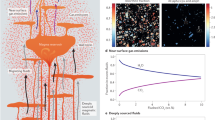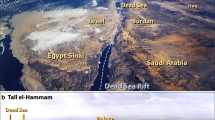Abstract
AFTER being quiescent for more than forty-three years, the Krakatoa volcano renewed its activity in December 1927. Heavy eruptions started from a submarine crater situated in the centre of the basin, between the three islands of the Krakatoa group, and the ejected volcanic materials formed a cone which in January 1928 appeared above the surface of the sea, and formed an island which was 175 metres long and 3 metres high. In the following months activity was most severe and a cone 200 metres high was built up having a volume of about twenty-five million cubic metres! This island was soon destroyed by the sea waves and eventually disappeared. This was Anak Krakatoa I.
This is a preview of subscription content, access via your institution
Access options
Subscribe to this journal
Receive 51 print issues and online access
$199.00 per year
only $3.90 per issue
Buy this article
- Purchase on Springer Link
- Instant access to full article PDF
Prices may be subject to local taxes which are calculated during checkout
Similar content being viewed by others
Author information
Authors and Affiliations
Rights and permissions
About this article
Cite this article
VAN LEEUWEN, W. Germinating Coconuts on a New Volcanic Island, Krakatoa. Nature 132, 674–675 (1933). https://doi.org/10.1038/132674b0
Issue Date:
DOI: https://doi.org/10.1038/132674b0
Comments
By submitting a comment you agree to abide by our Terms and Community Guidelines. If you find something abusive or that does not comply with our terms or guidelines please flag it as inappropriate.



